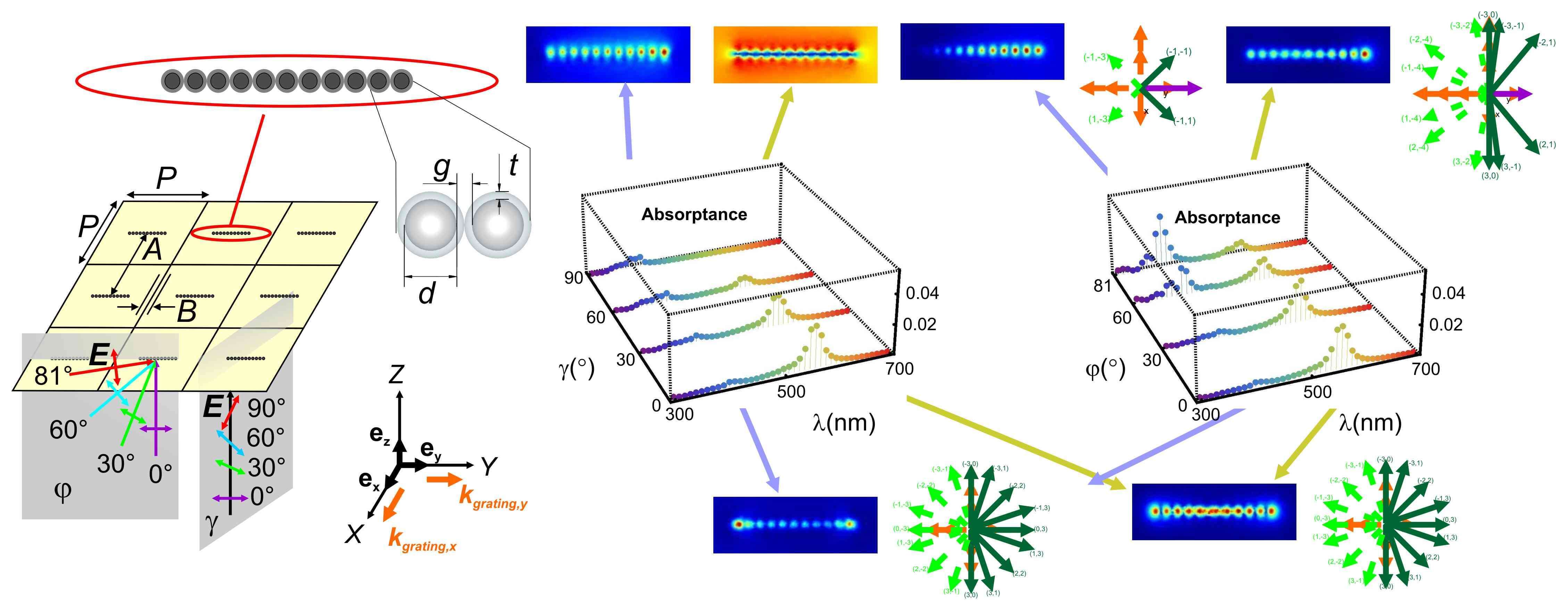
Plasmonic Modes on Arrays of Nanoparticle Aggregates
The exact knowledge of modes on nanoparticle aggregates is important to develop novel class of plasmonic biosensors. Main challenge in aggregates-based biosensor development is to improve the sensitivity and specificity of biosensors.
Geometrical parameters of simple linear and wavy aggregates were determined, which are capable of resulting in absorption maxima according to the measurements. Simple linear aggregates made of 11 nanoparticles with 0.6 nm gap were considered in 600 nm periodic arrays. It was proven that the relative dominance of maxima depends strongly on the γ azimuthal orientation qualifying the E-field oscillation direction with respect to the long axes of aggregates and on the φ incidence angle during p-polarized light illumination. The eigenmodes of linear and wavy cysteine-covered silver nanoparticle aggregates in arrays were determined, and the standing and propagating modes developing as a result of illumination by oblique incident p-polarized light were studied. It was shown that the measured UV and red-shifted maxima can be explained by considering array-effects as well. Accordingly, the effect of vectorial grating coupling was analyzed and the order of couplings supporting the observed modes was determined. It was shown that the forward and backward propagating modes can result in standing modes appearance at oblique incidence. The possibility to enhance different higher order modes in appropriate configurations was demonstrated.

Schematic drawing of the array of cysteine coated silver NP linear aggregates. Modes at the UV and red-shifted absorptance maxima at different illumination directions on a short linear aggregate. Vectorial diagram of grating couplings that contribute to the observable modes.
- A Szalai, Á Sipos, E Csapó, V Hornok, L. Tóth, M Csete, I Dékány: Proceedings of SPIE (2011) p. 80963B-1-80963B-9. (ISBN:9780819487063)
- A Szalai, Á Sipos, E Csapó, L Tóth, M Csete, I Dékány: Plasmonics 8 (1) (2013) p. 53-62.
- M Csete, A Szalai, E Csapó, L Tóth A Somogyi, I Dékány: “Journal of Physical Chemistry C – Nanomaterials and interfaces 118 (31) (2014) p. 17940-17955
somogyi.aniko1@gmail.com
Powered by Eventact EMS